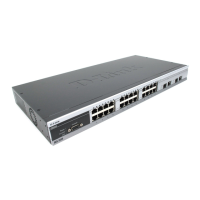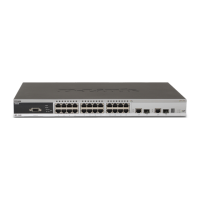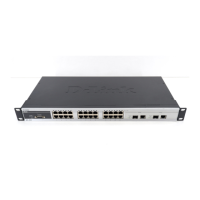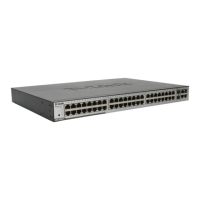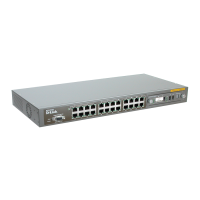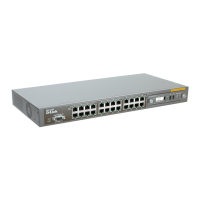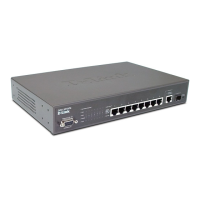DES-3550 Layer 2 Fast Ethernet Switch
13
QOS COMMANDS
The DES-3550 switch supports 802.1p priority queuing. The Switch has 4 priority queues. These priority queues are
numbered from 3 (Class 3) — the highest priority queue — to 0 (Class 0) — the lowest priority queue. The eight priority tags
specified in IEEE 802.1p (p0 to p7) are mapped to the Switch’s priority queues as follows:
• Priority 0 is assigned to the Switch’s Q1 queue.
• Priority 1 is assigned to the Switch’s Q0 queue.
• Priority 2 is assigned to the Switch’s Q0 queue.
• Priority 3 is assigned to the Switch’s Q1 queue.
• Priority 4 is assigned to the Switch’s Q2 queue.
• Priority 5 is assigned to the Switch’s Q2 queue.
• Priority 6 is assigned to the Switch’s Q3 queue.
• Priority 7 is assigned to the Switch’s Q3 queue.
Priority scheduling is implemented by the priority queues stated above. The Switch will empty the four hardware priority
queues in order, beginning with the highest priority queue, 4, to the lowest priority queue, 0. Each hardware queue will
transmit all of the packets in its buffer before permitting the next lower priority to transmit its packets. When the lowest
hardware priority queue has finished transmitting all of its packets, the highest hardware priority queue will begin transmitting
any packets it may have received.
The commands in the Command Line Interface (CLI) are listed (along with the appropriate parameters) in the following table.
Command Parameters
config bandwidth_control [<portlist>] {rx_rate [no_limit | <value 1-1000>] | tx_rate
[no_limit<value 1-1000>]}
show bandwidth_control <portlist>
config scheduling <class_id 0-3> {max_packet <value 0-255> |
max_latency <value 0-255>}
show scheduling
config 802.1p user_priority <priority 0-7> <class_id 0-3>
show 802.1p user_priority
config 802.1p default_priority [<portlist> |all ] <priority 0-7>
show 802.1p default_priority <portlist>
Each command is listed, in detail, in the following sections.
124

